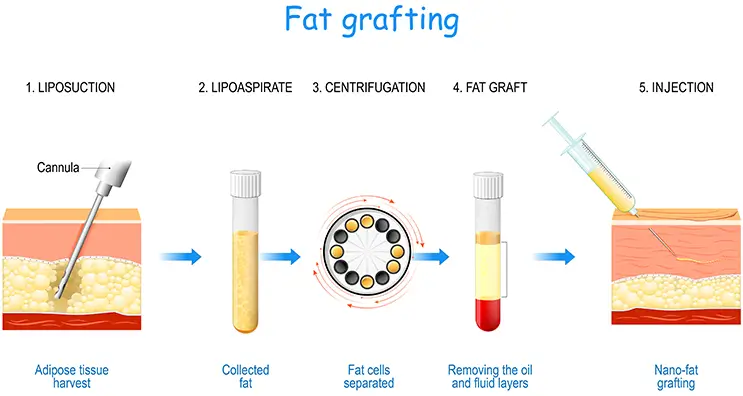Tuberous Breast Deformity: Problems and Solutions

Tuberous breast deformity is a cosmetic breast condition that many women experience. It occurs due to abnormal breast development during puberty, which results in a distinct breast shape. Few research studies have been published; therefore, the true prevalence of tuberous breast deformity is unknown. However, a retrospective analysis published by the International Society of Aesthetic Plastic Surgery revealed that for women seeking breast augmentation or breast reduction, approximately 50% among 1,600 were due to Tuberous breast deformity.
Tubular breasts usually look small, cone-shaped, asymmetric, and too far apart. In addition, the nipples tend to look pointy and puffy with an over protruding nipple-areola complex.
The treatment of tubular breasts involves breast augmentation and reconstruction, with or without implants. The goal is to give the breasts a larger size and a rounder, more natural contour.
What Are Tuberous Breasts?
Tuberous or tubular breasts, also called hypoplastic breasts, are small breasts that have an abnormal cone-shaped appearance. This cosmetic breast condition is usually a result of a problem in breast formation during fetal development.
Tubular breasts typically lack breast tissue, especially in the lower part, making them look underdeveloped (hypoplastic). Therefore, instead of having a full and round appearance, the breast can look pointy, oval, or square-shaped.
The typical features of tubular breasts include:
- Underdeveloped breasts
- Square-shaped breasts
- Cone-shaped breasts
- Widely spaced breasts
- Snoopy breast shape
- Puffy nipples
- Abnormally large areolas (the pigmented skin around the nipples)
- Breast asymmetry (one breast looking visibly different than the other).
Women with breast hypoplasia may not be able to breastfeed properly. Since the breast isn’t fully mature, it may have insufficient glandular tissue and would not be able to produce enough milk.
Tubular breasts are quite common among women seeking breast reshaping surgery.
What Causes Tubular Breasts?
It is still not clear why tubular breasts occur. Scientists believe that the condition happens because of an error in breast tissue formation during fetal development.
This error prevents the breasts from growing into their full size when you reach puberty. Moreover, it leads to the formation of rings of fibrous bands around the areola, which constrict the nipple-areola complex. As a result, the nipples appear puffy and protrude outwards, giving tubular breasts their cone-shaped appearance.
How Can You Fix Tuberous Breasts?
Many women with tubular breast syndrome may be insecure about their appearance and feel like there is nothing they can do to fix it. However, there are many possible solutions.
Tubular breasts can be corrected through breast augmentation (with or without implants) and surgical reconstruction.
Each patient has different breast anatomy and can have different degrees of tubular breast deformity. Therefore, each case necessitates unique breast correction techniques depending on the shape, size, and position of each of your breasts.
Tuberous Breast Surgery
Tuberous breast correction surgery is more complex than regular breast augmentation surgery, demanding specialized skill and experience. At leading plastic surgery centers, surgeons aim to fully reconstruct the breasts to give them a normal anatomical round shape and contour.
To achieve that, they use special reconstructive techniques to treat tubular breasts that involve releasing constricted tissue, lifting the breast, breast reshaping, and areolar repositioning.
One step tuberous breast correction surgery
This is done when the patient has enough breast tissue to reconstruct tubular breasts without implants. One step tuberous breasts surgery involves:
- Releasing the tissue constricted around the base of the breast
- Spreading out some of the breast tissue into the lower part to compensate for the insufficient breast tissue
- Releasing the constrictive band around the areola
- Lifting the breast to reposition the nipple into a more natural position
- Reducing the size of the areolas if they’re too big
This surgery can reshape tubular breasts and nipples all in one go. It gets rid of snoopy or puffy nipples and makes the areola look more proportional to the rest of your breast. It can also give you fuller and more rounded breasts.
Two-step tuberous breast correction surgery
If the deformity of the tube-shaped breasts is more severe, two separate operations may be required.
- During the first surgery, constrictive tissue is released from around the nipples or base of the breast. Then, tissue expanders are implanted in the breasts.
- These are kept for weeks or months and are gradually inflated to stretch the skin and muscles of the chest, making room for future breast implants.
- A second surgery is done once the breasts are stretched. The expanders will be replaced with permanent breast implants. In addition, the breasts and nipples are further reshaped into a more natural form.
This two-step breast reconstruction procedure can fix breast asymmetry, fill the cleavage, give the breasts more volume, and bring them closer together.
Fat Grafting
Tubular breasts with only a mild deformity could be fixed by fat grafting. Fat grafting is a less invasive way to deal with tubular breasts without surgery.
Liposuction is used to remove fat from the hips, thighs, or belly and then strategically injected into the breasts. This helps loosen up constricted tissue and fix the pointy appearance of the nipples.
For people with less severe breast deformity, fat grafting can enlarge the breasts, pump up the cleavage, and give natural-looking results.

Composite Breast Augmentation
A recent innovation for treating tubular breasts promises even better results than the traditional methods.
The new technique involves composite breast augmentation, or lipo-implant, that uses both implants and fat grafting to help restore the normal shape of the breasts.
In addition to implants, the lower parts of the breasts are expanded using fat grafts to fully reconstruct them.
This new unique technique for tubular breast reconstruction promises women the best possible cosmetic outcomes and the most natural results.
What are Complications of Tuberous Breast Surgery?
Complications after breast augmentation for tuberous breasts are rare. They include:
- Hematoma (blood buildup under the skin)
- Seroma (fluid buildup under the skin)
- Wound infection (causes pain and redness of the skin and a fever)
- Loss of nipple sensation
- Breast asymmetry
- Skin necrosis (a rare complication)
- Capsular contracture (formation of scar tissue around the implant in the long run)
- Implant rupture
- Implant drop
Thus, it is vital to choose a surgeon and center routinely performing tuberous breast correction surgery using the most advanced and safest techniques medicine has to offer.
How is Recovery after Tuberous Breast Surgery?
Total recovery time from tubular breast correction surgery depends on the surgical technique used and the patient’s body anatomy. On average, full recovery can take around 6-8 weeks. During post-op recovery, it is recommended that you:
- Take a week off from work and don’t exert much physical effort
- Sleep on your back during the first month of your recovery
- Wear a surgical pushup bra for a few weeks to help your breasts heal
- Avoid exercising the first 3-4 weeks after surgery
- Wait around 12 weeks before returning to strenuous activity
During your recovery, your care team will follow you every step of the way to make sure that you recover smoothly and get the best out of your breast surgery.

Dr. Mireia Ruiz Castilla is the Head of the Plastic, Aesthetic, and Reconstructive Surgery Service at the Hospital Quirónsalud Barcelona. She has extensive experience in the medical-surgical management of breast pathology, cutaneous oncology, burns, facial fractures, hand surgery and alterations of skin coverage, both with the use of conventional as well as microsurgical techniques. Dr. Mireia has multiple presentations at international congresses to her credit and is the author of several publications in scientific journals. Forbes magazine ranked Dr. Mireia among the 5 best plastic surgeons in Spain in 2018, 2019, and 2020.

The Plastic, Aesthetic and Reconstructive Surgery unit at Quirónsalud Hospital is one of the top centers in Spain. Dr. Mireia Ruiz-Castilla and her team of experts offer the full spectrum of specialized reconstructive surgery to fix tubular breasts and other cosmetic breast deformities. Around 95% of patients who come to Dr. Ruiz-Castilla for breast reshaping surgery have some degree of tubular breast deformity. Quirónsalud’s plastic surgery referral center in Barcelona has a team of the best reconstructive surgeons who specialize in tubular breast correction. Surgeons use the latest evidence-based techniques to reconstruct tubular breasts while achieving natural and long-lasting results.
For more details, please visit https://www.quironsalud-hospitals.com/
Sources:
Featured Blogs



